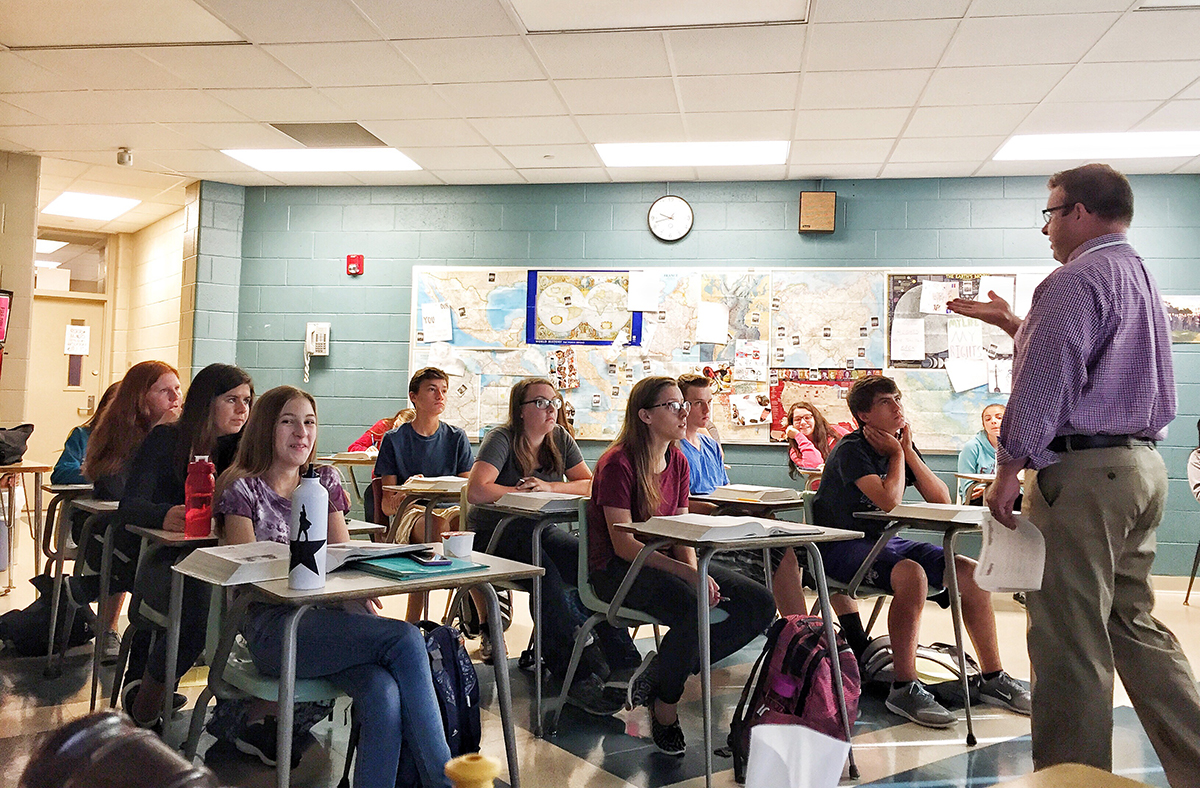One of the major frustrations of teachers, if not the major frustration, is that they so often feel a deep sense of failure because they cannot practice their profession—teaching. Teachers everywhere complain about lack of time to be a teacher, to facilitate learning.
Some blame today’s students because they may seem harder to teach, less interested, unmotivated, or lacking in discipline. One teacher admitted, “I feel I have to be an entertainer and compete with Smartphones and apps to attract interest—and I don’t have their budget.”
Today’s kids are different in one respect: Compared to children growing up decades earlier when information about the world was relatively difficult to obtain, today’s school children are walking encyclopedias. Therefore, when schools limit their function to the dissemination of knowledge and information, they find themselves being judged as boring and irrelevant by their more sophisticated audience. Television and the internet, for better or worse, has made obsolete the concept of the school as a dispenser of information.
Even in up-to-date schools that provide environments for learning skills of inquiry, methods of obtaining information, processes, and procedures, values clarification, problem-solving skills, and the like, teachers still face difficulties finding sufficient time for real teaching and learning.
We provide teachers with the necessary skills for enlarging the No Problem Area because learning stops when students have problems, and teaching stops when students cause teachers problems.
In the No Problem Area, too, relationships are improved and made stronger. As we explained in Chapters III and IV [from the T.E.T. book] Active Listening and the other counseling skills inevitably bring about mutual feelings of warmth, closeness, and intimacy in the teacher-student relationship. The same is true when teachers are teaching and students are learning in the No Problem Area of the Behavior Window.
Teachers feel good about themselves when they are permitted to teach and they feel warm toward students when they are motivated to learn; and students love to learn and feel good about teachers who can foster learning. On the other hand, teachers get to dislike kids who won’t let them teach, and kids dislike teachers and schools when they feel, “I don’t learn anything in school.”
Within our theoretical concept of teacher effectiveness there exists a strange paradox having to do with the No Problem Area and the warm and close relationships that develop therein: Although the 12 Roadblocks to Communication are ineffective and harmful to students when they own a problem (Student-Owned-Problem Area) or when the teacher owns a problem (Teacher-Owned-Problem Area), students seldom feel the same roadblocks block their communication or lower their self-esteem while teaching and learning are in progress (No Problem Area).
When the teacher-student relationship is good because both are meeting their needs, it is usually safe (as well as quite appropriate) for teachers to direct, warn, moralize, give facts, advise, criticize, evaluate positively, analyze, question, reassure, and—yes, even use sarcasm, name-calling, or humor.
Study the following interaction between a high school drama teacher and one of her rather talented students. Evaluate the quality of the relationship. Doesn’t it seem warm and close? Notice the student’s responses to the teacher’s frequent use of roadblocks. They don’t appear to be roadblocks, do they?
Teacher: Monica, take the stage, and hurry. (Ordering, directing)
Monica: Oh-oh. Now I’m next.
Teacher: This time, Monica, I suggest you act much angrier. (Advising)
Monica: Okay, I’ll try.
Teacher: If you don’t seem really angry, no one is going to believe your deep hurt in the last scene. (Warning)
Monica: Shall I pound the table?
Teacher: That’s ridiculous; don’t be a ham up there! (Negative evaluation, Name-calling)
Monica: I was only kidding.
Teacher: You were only trying to get me all riled up, that’s what. (Analyzing)
Monica: Touché.
Teacher: Come on now, if it’s worth doing, it’s worth doing right. I know you can do it. (Moralizing, Reassuring)
Monica: I needed that.
Teacher: Do you know your lines? (Probing question)
Monica: Pretty well, I think.
Teacher: Okay, Meryl Streep, knock ’em dead! (Humor)
The lesson for teachers is: As long as the relationship is in the No Problem Area you can send all kinds and varieties of messages. You can be totally spontaneous, uninhibited, free. You can be yourself, whether that means being a clown, prodder, advisor, preacher, critic, taskmaster—or a mixture of all of these.
When teachers can teach and students can learn, and when each can be human, the classroom experience will be a joy for both.

